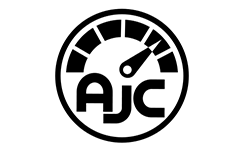AJC Replacement Batteries for ATV’s and UTV’s

Don’t let a Dead Battery Ruin Your Ride!
Ready to hit the trails or tackle tough jobs with your ATV or UTV? Nothing stalls your adventure faster than a dead battery. This guide is your key to ensuring reliable power every time you turn the ignition. We’ll walk you through essential maintenance practices, from understanding different battery types to simple steps you can take to prolong battery life and avoid frustrating breakdowns.
What’s the difference between ATV and UTV?
Both vehicles have something in common. They are for riding outdoors and they have four wheels. Many manufacturers make both ATVs and UTVs.
ATV stands for All Terrain Vehicle. The rider steers with handlebars for a cool recreational ride. Some ATVs are big enough for two people but most are one passenger vehicles.
UTV is for Utility Task Vehicle or Utility Terrain Vehicle. They tend to be larger and heavier than ATVs and can accommodate 2 to up to 4 people. They have steering wheels instead of handle bars and seats, instead of saddles. Recently they have started to shed their image of being farm work vehicles, as some manufacturers are creating high powered UTVs to appeal to families on the go!
Maintain the battery
Regardless of your choice of ride, you need to have the battery in prime condition to get your engine started. If you are a seasonal rider, you will need to maintain the battery in the off season, so it is capable of starting the engine when you are ready to ride. Batteries will discharge with lack of use, and if allowed to discharge too far, it may not re-charge. Then you need to purchase a new one!
When you are ready to put the vehicle in storage for the off season, you want to get a trickle battery charger and hook it up. This will keep the battery charged and prolong its useful life. Some batteries are hard to reach in the vehicle and you may need to install a quick disconnect cable to allow you to hook up the charger without removing the battery from your vehicle. Check your manual for ways to accomplish this, as each manufacturer lays things out a bit differently.
Some things that don’t work for charging the battery are:
- Starting the ATV or UTV every so often and turning it off. You use more power than you replace by doing this.
- Starting the vehicle and idling, as getting a significant charge will take a very long time.
When it’s time to replace the battery
Even with the right care, you will eventually need to replace your atv/utv battery. Get a high quality replacement battery. Modern ATVs and UTVs can use the newer technology AGM (absorbed glass mat) batteries. These are maintenance free and sealed to prevent leaks. They can also be installed in any orientation if you happen to have a cramped battery compartment.
BatteryClerk.com has quality replacement batteries for most brands of ATVs and UTVs in stock and ready to ship. Order online or give us a call and we will have you back on the dirt roads having fun!
The Power is in Your Hands: Keep Your Battery Ready
Maintaining your ATV or UTV battery doesn’t have to be a chore; it’s an investment in uninterrupted performance and longer-lasting equipment. By understanding your battery type and following these simple maintenance steps, you can significantly reduce the risk of unexpected power loss and extend the life of your battery. So, take a little time to care for your battery, and ensure your off-road adventures or work tasks are always powered up and ready to go!
Key Battery Maintenance Takeaways:
Troubleshooting Common Issues: Recognize signs of a weak or failing battery, such as slow cranking or dim lights, and take appropriate action.
Regular Cleaning: Keep battery terminals free from corrosion to ensure optimal electrical flow.
Proper Charging: Use a compatible charger and avoid overcharging or deep discharging your battery. Consider a battery maintainer for periods of inactivity.
Secure Connections: Ensure all battery connections are tight and secure to prevent power issues.
Appropriate Storage: Store your ATV/UTV battery in a cool, dry place when not in use, and maintain its charge.
Identify Battery Type: Understand whether you have a lead-acid, AGM, gel, or lithium-ion battery, as maintenance needs vary.
Monitor Battery Health: Periodically check your battery’s voltage to identify potential issues early.
Preventative Measures: Address any signs of swelling, leaks, or damage immediately.
Extend Battery Life: By following these tips, you can maximize the lifespan of your ATV or UTV battery, saving you time and money.
